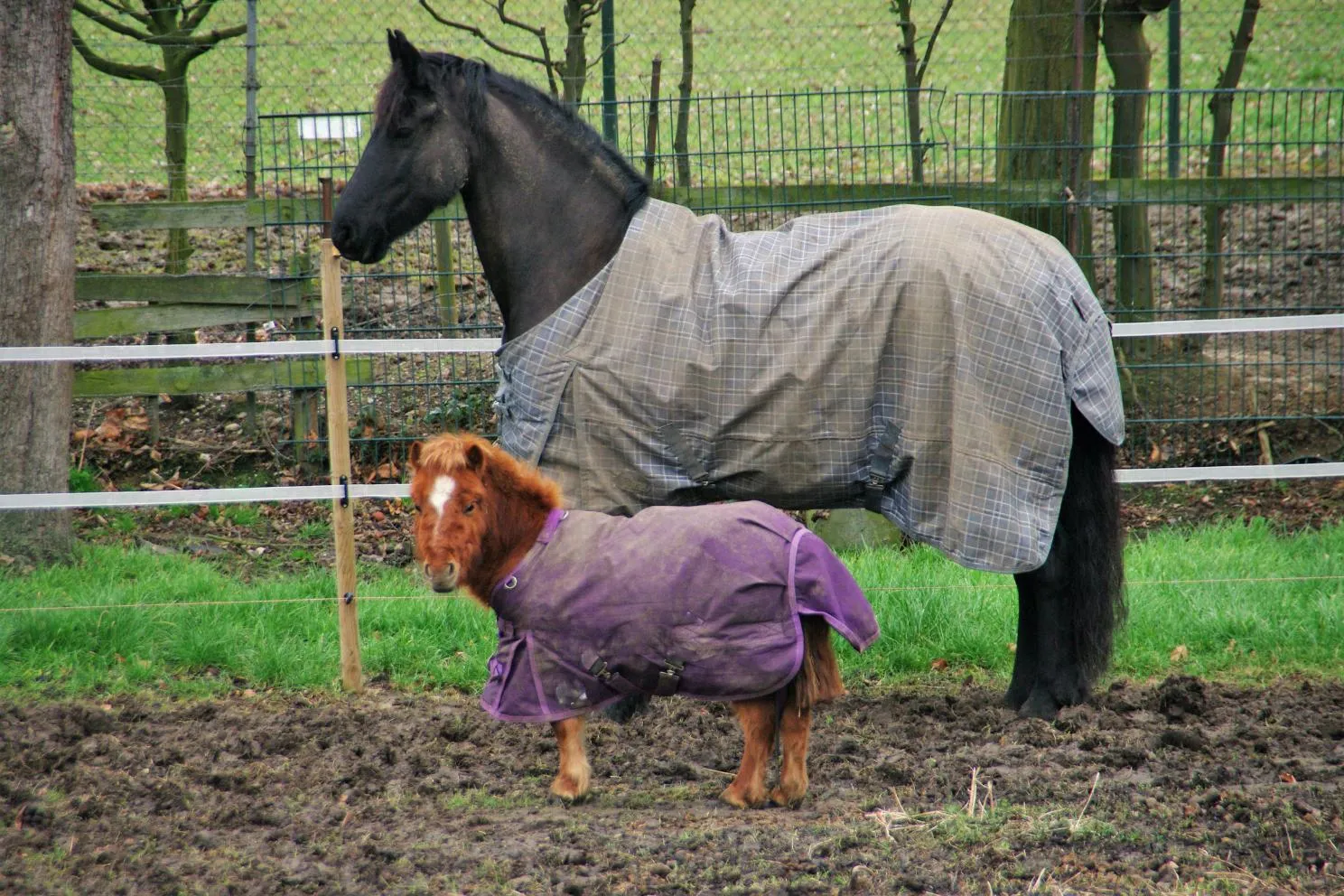Menu

From wearing bobble hats, gloves and overcoats, spring jackets have now been brought out and the thermometer reads well above freezing during daytime hours. It's lovely to feel the warmth, but as an owner of a rugged horse, you'd do well to pay particular attention to making sure your horse doesn't get too warm. We're offering some tips on how to keep an eye on whether your horse should have its rug removed.
The answer is quite simple. No, a horse doesn't inherently need a rug. There may be circumstances in which it makes perfect sense to put a rug on a horse, but horses are perfectly capable of growing the right winter coat to keep them from freezing. And shedding it when necessary, for that matter.
• Horses that have difficulty maintaining their weight.
• Older horses who struggle to maintain weight.
• Horses in hard work, which makes them sweat a lot.
• When the horse owner is pressed for time and unable to spend much time grooming and preparing the horse before a ride.
• Horses that are nearly impossible to clean before putting equipment on because the paddocks are muddy.
• Horses don't necessarily suffer from wearing a rug. It just requires that you, as the horse owner, are prepared to repair and wash the materials when they get damaged or covered in mud. An old myth states that once a horse is used to wearing a rug, it cannot revert to its natural coat. However, there's not much scientific evidence to support this belief.
Although horses can wear rugs, it's essential for horse owners to closely monitor their wellbeing when there are weather changes. Horses are better off being slightly too cold than too warm, as they are much better at regulating their body temperature than humans. You might be like many other riders who rush to the stable at the slightest weather change and constantly check your horse under the rug. To give you some peace of mind, here are a few tips on how to easily spot if your horse is too warm and needs its rug removed:
• If the horse is damp behind the ears and sweating down its neck, it is too warm. Either remove the rug entirely or put on a thinner one.
• If it is breathing heavily, this may be a sign of overheating. NOTE: Be aware that horses often sweat when they are too warm, but they may actually be quite dry when they start to become dangerously warm. In this case, remove the rug immediately and offer plenty of water.
• If your horse appears sluggish and has its head lowered, it may be too warm.
• For bumps, blisters or other skin problems caused by excessive heat under a rug.
• For significant temperature fluctuations in a short period. Nights may be cold, but days can be warm. It's a good idea to remove the rug early in the morning.
Read also: Magnetic rug
On cold days, horses will naturally seek out sunny spots in the field. This, in itself, isn't a problem, but if you start to see steam coming from the rug, it's a good idea to be extra attentive. The steam indicates that the horse is getting damp under the rug. When the cold night arrives later in the day, the horse will be wet under the rug. Make sure your horse gets its rug removed. You may want to put a blanket on it so it can dry before putting the rug back on for the night.
A clipped horse should be considered as a horse with a summer coat (more or less). This means that it typically needs to wear a rug for longer periods and at higher temperatures than a non-clipped horse. Of course, you should keep an eye on whether it's getting too warm based on the points we've described above. If there are no signs of overheating, the rug should remain on. Even when the horse is in the stable, nights can still be cold, and a clipped horse will usually continue to wear a rug.
It can vary greatly as to how each individual horse thrives best with a rug. Some horses cannot maintain warmth without a rug, even when temperatures have climbed well above 0 degrees Celsius. Others sweat as soon as the sun shines on them. The best thing you can do is keep a close eye on your horse and ensure it doesn't get too warm. In the chart below, you can get an idea of the temperatures at which you should start thinking about the thickness of your rug and when it might be smart to consider removing it from your horse completely. As mentioned, this is only a guide. Always seek additional advice if you're still unsure.
| Temperature | Non-Clipped | Clipped |
| Above 10°C | No rug | No rug or only wearing some type of blanket |
| From 5 to 10°C | No rug | Some type of blanket or a light rug |
| From -1 to +5°C | A light rug | A medium or thick rug |
| From -6 to -1°C | A light to medium rug | A thick rug |
| From -12 to -6°C | Medium to thick rug | Extra thick rug |
| Below -12°C | Extra thick rug | Extra thick rug plus neck cover |
Sources: The Horse, Harmany Eguine.